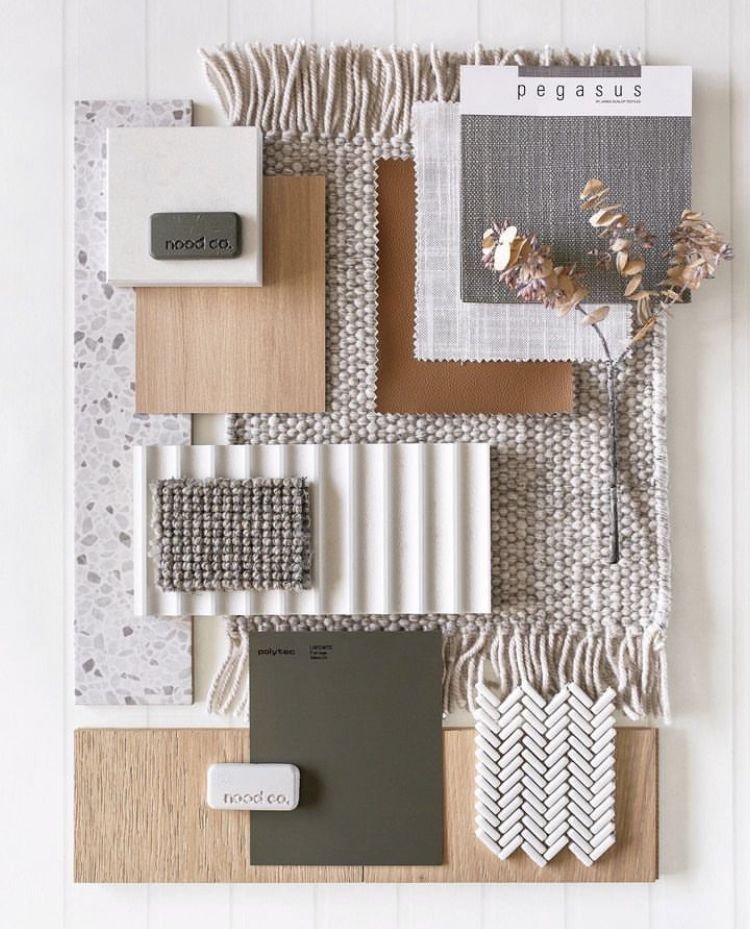Moodboards That Actually Work: How to Stop Collecting “Inspo” and Start Designing
Image | ardisenostudio Moodboard
It usually starts the same way.
Not with a paint swatch.
Not even with a Pinterest binge.
But with a quiet, creeping frustration.
The rug that almost works, but doesn’t.
The sofa that seemed like a good idea until it arrived.
The color palette that somehow feels too safe and too trendy at the same time.
So, like most people, you gather inspiration.
You collect. You pin. You screenshot.
Your phone fills up with rooms that feel like they should work.
But the more images you save, the less sure you feel about what’s right for your space.
Because the problem isn’t that you lack options.
It’s that you haven’t made sense of them yet.
That’s what a real moodboard is for.
Not to assemble a “look.”
But to create a filter—a way to sort out what’s calling to you versus what’s just more noise.
That’s the part no one teaches.
And it’s why most moodboards lead people right back into indecision.
Moodboards Aren’t About Finding “Your Style.” They’re About Finding Your Pattern.
A moodboard isn’t a collage.
It’s a clarity tool.
It’s how you:
Notice what you’ve already chosen over and over (even when you didn’t realize it).
Spot the patterns in your taste—and the contradictions you keep repeating.
Make sense of the inspiration before it becomes another frustrating rabbit hole.
It’s not about "your signature style."
It’s about building a system to help you notice why you love what you love—and why some pieces never feel quite right once you get them home.
How to Create a Moodboard That Makes it Make Sense
Step 1: Start with a Feeling You Keep Avoiding
Not just how do I want it to feel?
But: What feeling have I been chasing with every sofa swap and pillow purchase—and never quite landing?
That’s the emotion we design for. Not a trend. Not even a style. A lived experience.
Step 2: Gather Without Editing
Collect images, colors, textures—even songs, scents, and places that feel like the mood you’re trying to create.
(Yes, we moodboard with more than just Pinterest and paint decks around here.)
Look for:
Colors that make you happy
Textures that you love (wood, linen, stone, leather)
Rooms that feel right—even if you can’t explain why
Step 3: Spot What You’ve Been Telling Yourself Without Words
Look at the patterns. Not just in the colors and shapes—but in the stories.
Do you keep choosing calm, grounded tones because you’re craving stability?
Do you save bold, dramatic rooms because you want to feel a little braver at home?
Your moodboard is already telling you what you want.
You just have to listen.
Step 4: Curate Like You Mean It
This is where you stop collecting and start committing.
Keep only what supports the feeling you’re chasing.
The rest? Let it go.
Step 5: Make It Real, Not Just Pretty
Test your ideas in real life. Swatches. Samples. Moodboard mockups.
The moodboard isn’t a wish list. It’s a decision tool.
Image | ardisenostudio Moodboard
From Moodboard to Reality: What Happens After the Vision
A moodboard isn’t the finish line, think of it as the conversation starter.
It gives you a clear lens—but the real work happens when you start testing that vision against real-life decisions.
Here’s how to actually use it without falling back into overwhelm:
→ Shop with intention, not impulse.
If it’s not reflected on your moodboard—or doesn’t enhance what’s already there—it’s a no.
→ Experiment before committing.
Paint samples. Fabric swatches. Light tests. You don’t need to leap—you just need to listen to what feels aligned before it’s permanent.
→ Stay flexible, not frozen.
If something feels off once you see it in real life, it’s not a failure. It’s feedback. Adjust your moodboard. Refine your vision. This is how good design evolves.
Because the point isn’t to create a home that just “looks cohesive.”
It’s to create one that makes sense—for how you live now, and where you’re headed next.
Rustic Modern Mood Board
A blend of warm tones, natural materials, and modern charm for that cozy, cabin-in-the-city feel.
Nature’s Colors Mood Board
Think earthy tones, wood textures, and pops of green that bring the outdoors in.
Image | ardisenostudio
What Happens Next Is Where Most Moodboards Fail
The moodboard itself doesn’t make the decisions for you.
It just makes them easier.
But you still have to choose.
Confidently. Decisively.
That’s the piece most people struggle with.
That’s what I teach through every offer—from my fast-track Design Mood Gut-Check to the full deep-dive Mindful Home Creator experience.
Because building a home you love?
It’s not about collecting inspiration.
It’s about learning to move from inspiration to decision—without circling back into the same doubts.
And that’s exactly what we can do together.
DIVE DEEP INTO OUR ARCHIVES












